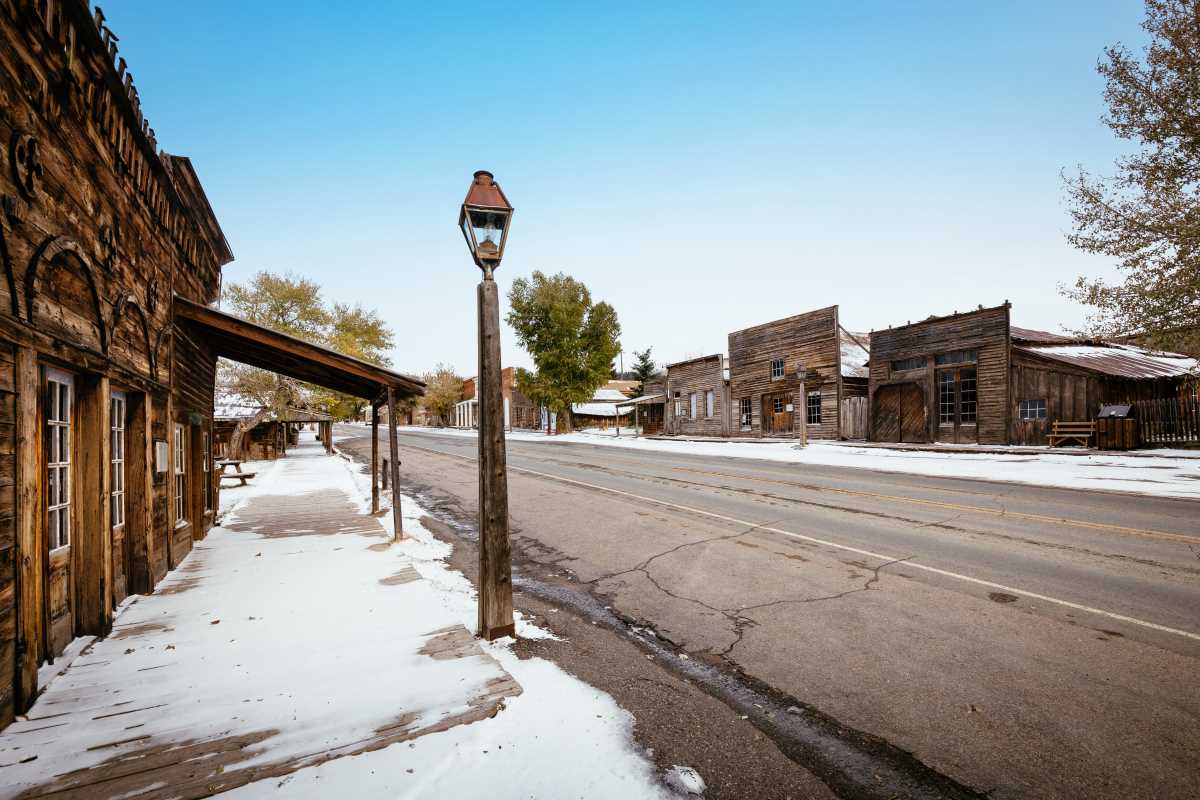In an age of hyper-speed travel and fleeting digital trends, a curious thing is happening: people are falling back in love with the past. There's a growing thirst for something real, something with a story etched into its very foundations. This craving for authenticity is breathing new life into sleepy historic towns all across the country. Places that were once footnotes in a history book or quiet stops along a forgotten highway are suddenly buzzing with a fresh energy. Travelers are bypassing the sprawling theme parks and crowded metropolises in favor of cobblestone streets, century-old storefronts, and a palpable sense of place. It’s a tourism revival fueled not by flashy attractions, but by a genuine desire to connect with history in a tangible way.
This resurgence is about more than just nostalgia. It’s a deliberate choice to slow down and appreciate the craftsmanship, culture, and character that modern life often paves over. These towns offer an escape from the cookie-cutter suburbs and anonymous glass towers, providing a window into a different era. They are living museums where every building has a biography and every local shop has a legacy. For a new generation of travelers, armed with smartphones but hungry for genuine experiences, the appeal of a weekend spent exploring a well-preserved main street, chatting with local artisans, and sleeping in a historic inn is proving to be an irresistible draw. The result is a quiet renaissance, as these pockets of the past become the travel destinations of the future.
Beyond the Velvet Ropes
For a long time, "historic tourism" conjured images of stuffy museums, guided tours on a strict schedule, and a whole lot of looking at things from behind a velvet rope. Today’s revival is shattering that perception. The most successful historic towns are not treating their past like a fragile artifact to be kept under glass; they are inviting visitors to live it. This new approach is interactive and immersive. It’s about turning history from a passive lesson into an active experience. Instead of just reading about a town's blacksmithing past, you can take a class from a master smith. Instead of just admiring a Victorian mansion, you can stay the night in one that’s been converted into a boutique hotel.
This hands-on approach is key to engaging modern travelers who value experiences over possessions. These towns are becoming hubs for artisanal workshops, culinary tours that trace the region's gastronomic history, and outdoor activities that follow historic trails. The focus has shifted from preservation to participation. By allowing visitors to become part of the town's ongoing story, these destinations are creating deeper, more memorable connections. It’s a smart strategy that honors the past while ensuring its economic and cultural viability for the future, proving that history is not just something to be observed, but something to be felt, tasted, and explored.
The Charm of Main Street
The heart of any historic town is its Main Street, and their revival is central to this tourism boom. These are not the soulless strip malls of suburbia; they are architectural showcases lined with unique, independently owned businesses. The chain stores and fast-food joints are refreshingly absent, replaced by family-run bookshops, antique stores filled with treasures, and bakeries using recipes passed down through generations. Strolling down one of these streets feels like stepping back in time, yet the offerings are anything but dated. Savvy entrepreneurs are blending historic preservation with modern sensibilities, creating a compelling fusion of old and new.
You might find a hip, third-wave coffee shop operating out of a former 19th-century hardware store, its original tin ceiling and worn wooden floors still intact. A trendy farm-to-table restaurant might occupy a building that was once the town's bank, its old vault now repurposed as a quirky wine cellar. This adaptive reuse is the magic ingredient. It maintains the architectural integrity and character that makes the town special, while providing the high-quality food, drink, and shopping that contemporary tourists expect. It’s a delicate balance, but when done right, it creates a vibrant commercial center that serves both locals and visitors, making Main Street the town's living room once again.
A Tour of Timeless Towns
From former gold rush outposts to colonial-era seaports, countless towns are rediscovering their appeal. They offer a diverse tapestry of American history, each with a unique story and a distinct personality. While some have been popular for decades, others are just now stepping into the spotlight, attracting visitors with their beautifully preserved architecture and newfound vibrancy. Planning a trip to one of these gems is a journey into the heart of the country's heritage.
Here are a few historic towns that are capturing the imaginations of travelers and experiencing a significant tourism revival:
- Galena, Illinois: Nestled in the rolling hills of northwest Illinois, this town looks as though it was frozen in the 1850s. A stunning 85 percent of its buildings are in a National Register Historic District, featuring beautifully preserved Federal and Italianate architecture. Its Main Street, filled with over 100 independent shops and restaurants, is a masterclass in historic charm.
- St. Augustine, Florida: As the nation's oldest continuously inhabited European-established settlement, St. Augustine offers a rich blend of Spanish colonial history and coastal beauty. Visitors can explore the 17th-century Castillo de San Marcos, wander the narrow lanes of the Colonial Quarter, and feel the centuries of history under their feet.
- Deadwood, South Dakota: A legendary gold rush town of the Old West, Deadwood has fully embraced its wild and woolly past. Once home to figures like Wild Bill Hickok and Calamity Jane, the entire town is a National Historic Landmark. Visitors can enjoy the historic architecture, try their luck in the casinos housed in old saloons, and soak in the frontier atmosphere.
- Bardstown, Kentucky: The "Bourbon Capital of the World," Bardstown’s history is steeped in spirits. It’s a picturesque town with a classic courthouse square and a welcoming spirit. The revival here is driven by the booming interest in the Kentucky Bourbon Trail, with visitors flocking to its historic distilleries and charming downtown.
- Taos, New Mexico: Offering a unique blend of Native American, Spanish, and Anglo cultures, Taos is both ancient and artistic. The multi-storied Taos Pueblo, continuously inhabited for over 1,000 years, is a UNESCO World Heritage Site. The town itself is a haven for artists, with historic adobe buildings housing numerous galleries and studios.
The Digital Word-of-Mouth Effect
Ironically, one of the biggest drivers behind the revival of these analog towns is the digital world. Social media platforms, particularly Instagram and TikTok, have become powerful engines for discovery. A perfectly framed shot of a charming cobblestone alley, a colorful Victorian home, or a beautifully plated meal at a historic inn can instantly spark wanderlust in thousands of potential visitors. These towns are incredibly photogenic, providing a rich visual backdrop that stands out in a feed cluttered with generic beach photos. The unique character and aesthetic of historic towns are their greatest marketing assets.
This digital word-of-mouth is more authentic and effective than any traditional advertising campaign. When travelers see their peers or favorite influencers exploring a place, it comes with an implicit endorsement. They are not just seeing an ad; they are seeing an experience. This has allowed lesser-known towns to gain national attention virtually overnight. Local businesses, historical societies, and tourism boards are leaning into this, creating shareable moments and using hashtags to consolidate their town's online presence. It’s a 21st-century phenomenon that is helping to preserve the 19th century, proving that technology and tradition can be powerful partners.
More Than a Day Trip
The final piece of the puzzle in this revival is the evolution of lodging. To truly experience a historic town, you need to stay there. The days of being limited to a nondescript roadside motel are over. A boom in boutique hotels, upscale inns, and beautifully restored bed and breakfasts allows visitors to immerse themselves fully in the historical ambiance. Many of these accommodations are located in historic buildings themselves, offering a stay that is part of the attraction. Imagine sleeping in a former sea captain's mansion, a converted 1920s schoolhouse, or a room above a historic tavern.
These establishments focus on providing a unique, high-quality experience that reflects the town's character. They often feature period-appropriate decor, locally sourced breakfasts, and hosts who are passionate storytellers and de facto town ambassadors. This elevation of lodging transforms a visit from a simple day trip into an immersive weekend getaway. It encourages visitors to slow down, spend more time and money in the local economy, and connect with the place on a deeper level. By offering a place to stay that is as charming as the town itself, these destinations are ensuring that visitors will not only come, but will also keep coming back.
.jpeg) (Image via
(Image via





